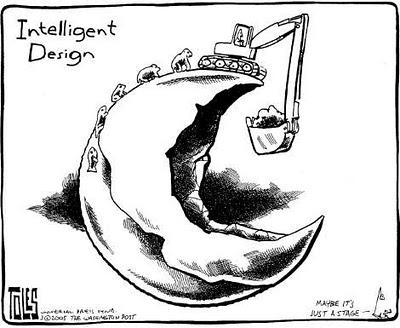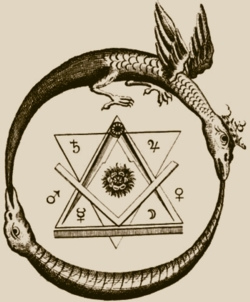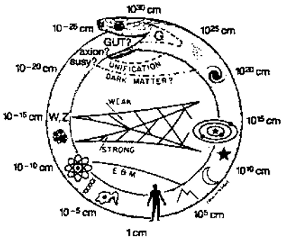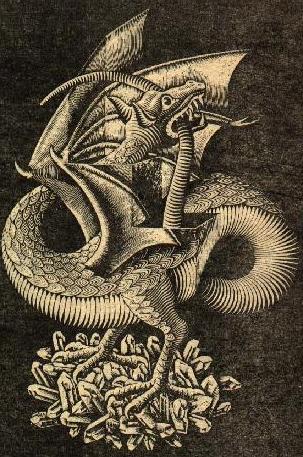Ask yourself: what kinds of “whats” express your own depth? Your depth is, what?
To which problem do you go to first, the problem of ‘what is the what,’ or, the problem of, what is depth in terms of my depth?
Alternately, can you read the meta-problem backward? In which case, one would identify the ends which are the ramifications of the varieties of the result of: what depth is a deep what? Then you argue your answers from these end results.
(Apologies to Dr. Seuss.)
Short cut: make a list of all your accomplishments on any given day. Circle the deep accomplishments. Justify your choices. Elaborate the terms of justification. Deepen the terms of justification.
Model makers around the end of the nineteenth century realised that their models’ translucent and airy forms could make real what till then might have seemed invisible abstractions: their faith rested in the possibility of turning geometry into artefacts. So, at Goettingen and other major research centres in mathematics, students were encouraged to contemplate, handle and design ever more exotic forms as part of their training in the realities of higher geometry. In 1882 their master, the mathematician and entrepreneur Felix Klein, designed a three dimensional form which seemed to have but one surface – it came to be known as the Klein bottle. At least as interesting as its formation is its dependence on the malleable materials of which it is made. The plasticity of glass and related substances was decisive for many of the great scientific advances of a century ago, for by manipulating and twisting such substances into elegant and manageable form, technicians were able to design objects which not only helped make abstractions real, but also aided the scientists of microphysics and the subatomic world perform trials which first showed the existence of rays which could penetrate matter and particles smaller than atoms: radiation tubes, radiometers, cathode ray instruments. The magnificent glass works of the labs and workshops of the Belle Epoque showed the world how it was made. Anish Kapoor, Unconformity & Entropy
See: Imperatives for unbiased holistic education: the Klein bottle, a universal structure: an archetypal image Melanie Purcell, Department of Philosophy, University of Newcastle, PDF
What is Radical Recursion?
Steven M. Rosen, Departments of Psychology and Philosophy (Emeritus) College of Staten Island/City University of New York
META-LOGUE
Paul Ryan: Gregory, the insistence that you have that the map is not the
territory. Okay. Axiomatic in terms of a way of approaching things.
Gregory Bateson: That’s old Korzybski, right.
P: Yes. As I understand it, this axiom is an insurance that logical
typing not be confused.
G: The territory not to be confused with the map. Right. Don’t eat the
menu card.
P: Now, in the Kleinform that I’m working with, there are times in
which the map becomes the territory and the territory becomes the
map. One part would be explained by being contained by two other
parts.
G: Right.
P: And in that instance we could call that the territory to be explained.
G: Wait a minute. So you draw the pictures. But these are not pictures
of something. These are pictures about something.
P: There’s no something as far as I can tell.
G: Oh, then, I don’t know what you’re at. I’m stuck again. Well, I can
say what I understood you to be at. At wanting to describe,
what shall we say, a process of embryology. And within the embryology,
there would be relations such that there would be whatever it is,
these sort of descriptive statements you’d need to make about the
embryology. And they would be related, as these three parts of the
kleinbottle are related to each other. It would then be suitable to
map them onto a Klein bottle. That’s not what you’re at.
P: No, no…it’s not.
G: Then I got you wrong. And I was so proud of myself. I thought I
was getting…( Laughter)
P: I feel it’s close, somehow, but…Let me try it this way. This is not
propositional. The intelligence here is not propositional.
G: The intelligence of no tautology in the end is propositional.
P: I didn’t realize that about logical types. There’s more flexibility
there than I’d thought. (excerpt: Metalogue: Gregory Bateson, Paul Ryan PDF
I’ve been pondering this subject: how a person abdicates depth by instrumentalizing their activities to such a great degree that all their means no longer connect to depth. (Yes, what is depth?) In a sense, what happens is those means merely are the set-up for the consumption of the next means. Uroboros.
The test for this is the enfolded question: what is my deep what?
May depth only be supported by content and identity? (This is a meta-question. Does any justification obtain this tautology: ‘The best of what I do reflects what I do best.’)
Is there nothing deeper than me at my best, doing my best?





